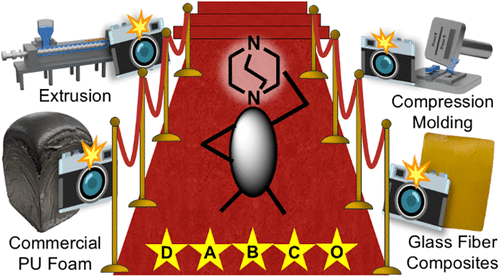A team from Northwestern University, in collaboration with BASF Corporation, has uncovered a breakthrough method for reshaping polyurethane foam—used in everything from insulation to mattresses and furniture—without requiring new additives.
The team led by William Dichtel, from Northwestern University and Alaaeddin Alsbaiee from BASF, noted that this new approach taps into the foam’s own chemical “helper” that remains from the manufacturing process, avoiding the need to introduce fresh chemicals. The findings, published in the Journal of the American Chemical Society, offer a promising solution for one of the hardest materials to recycle.
Polyurethane foam products are typically made with a chemical assistant that helps form the material during production. The researchers discovered that this assistant, which remains embedded in the foam, can be reactivated with heat and pressure. This process temporarily softens the foam, allowing it to be molded and reshaped. As it cools, the foam solidifies again, essentially transforming waste foam into reusable material.
In lab tests and real-world applications, the team found that heating and pressing polyurethane foam without adding new chemicals successfully turned it into thin, durable films. The properties of the films closely matched the original foam—rigid foam became stronger films, while flexible foam turned into more elastic ones. Additionally, they reinforced the films with glass fibers to enhance strength, broadening the potential for industrial applications beyond basic recycling.
One of the key advantages of this process is that it can be accelerated with industrial-grade mixing equipment commonly found in plastic factories. This means the method could be easily integrated into existing production lines, saving on both cost and environmental impact since it avoids the need for purchasing and adding new chemicals.
However, there are some conditions for optimal results. High moisture levels or impurities in the foam can reduce the effectiveness of the chemical assistant, but simple pre-treatment like drying or washing can typically solve this. Lower temperatures slow down the process, and in some cases, an additional boost may be needed.
Looking ahead, the team plans to test the method on mixed post-consumer foam waste from homes and demolition sites, refining the process to suit real-world factory conditions.
The potential impact of this breakthrough goes far beyond the lab. Builders and furniture makers face growing piles of polyurethane foam waste, with few recycling options available. If scaled up, this method could offer a cost-effective, environmentally friendly solution for giving foam products a second life, reducing landfill waste and helping the industry adopt more sustainable practices.
Rather than relying on new additives, the study demonstrates that the “hidden chemistry” within the foam itself is enough to rejuvenate the material. By harnessing this chemistry, used foam can be repurposed into new products, enhancing recycling efficiency, reducing costs, and driving the industry toward cleaner, more sustainable practices.




